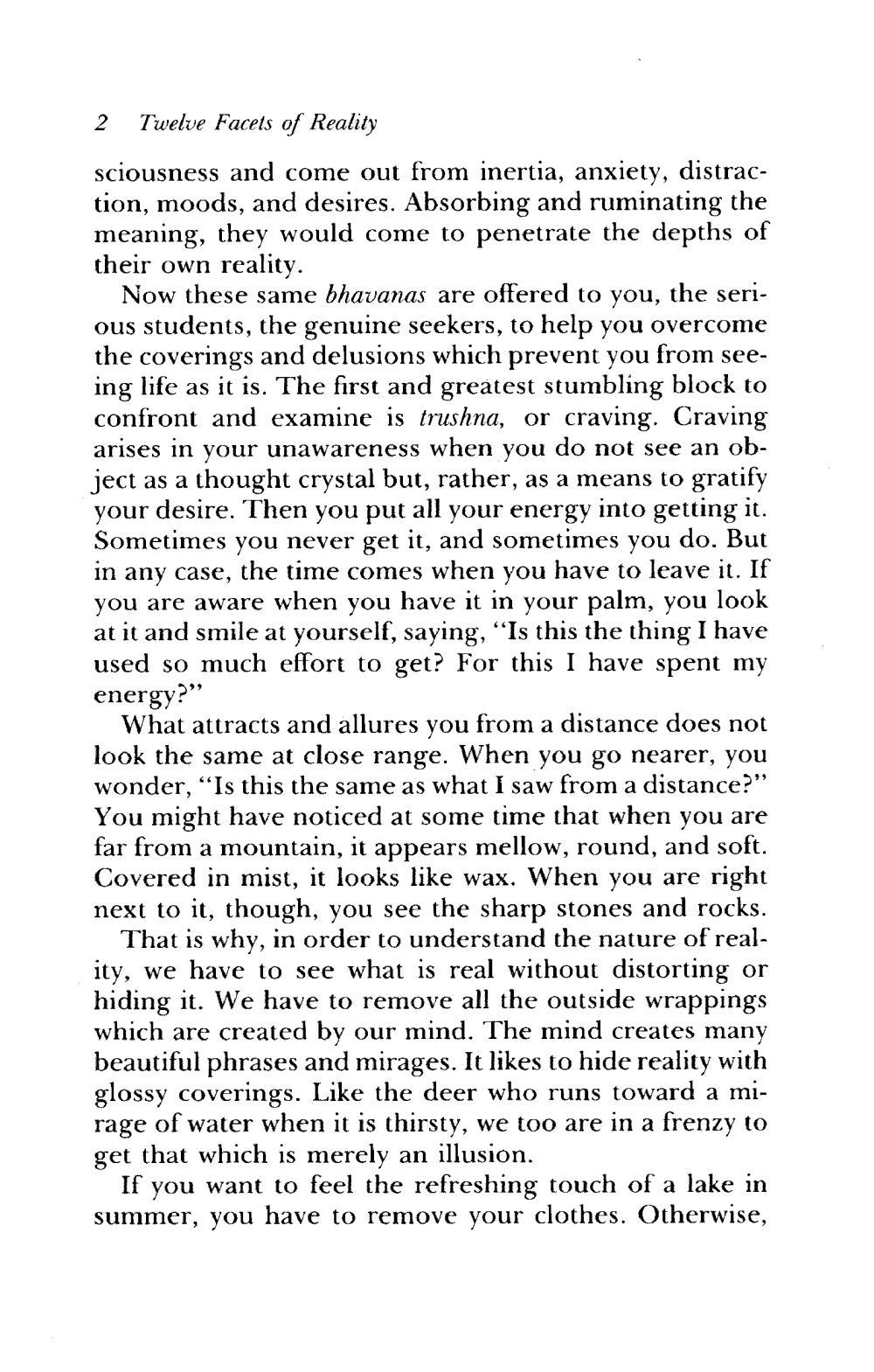________________
2 Twelve Facets of Reality sciousness and come out from inertia, anxiety, distraction, moods, and desires. Absorbing and ruminating the meaning, they would come to penetrate the depths of their own reality.
Now these same bhavanas are offered to you, the serious students, the genuine seekers, to help you overcome the coverings and delusions which prevent you from seeing life as it is. The first and greatest stumbling block to confront and examine is trushna, or craving. Craving arises in your unawareness when you do not see an object as a thought crystal but, rather, as a means to gratify your desire. Then you put all your energy into getting it. Sometimes you never get it, and sometimes you do. But in any case, the time comes when you have to leave it. If you are aware when you have it in your palm, you look at it and smile at yourself, saying, “Is this the thing I have used so much effort to get? For this I have spent my energy?”
What attracts and allures you from a distance does not look the same at close range. When you go nearer, you wonder, “Is this the same as what I saw from a distance?" You might have noticed at some time that when you are far from a mountain, it appears mellow, round, and soft. Covered in mist, it looks like wax. When you are right next to it, though, you see the sharp stones and rocks.
That is why, in order to understand the nature of reality, we have to see what is real without distorting or hiding it. We have to remove all the outside wrappings which are created by our mind. The mind creates many beautiful phrases and mirages. It likes to hide reality with glossy coverings. Like the deer who runs toward a mirage of water when it is thirsty, we too are in a frenzy to get that which is merely an illusion.
If you want to feel the refreshing touch of a lake in summer, you have to remove your clothes. Otherwise,




